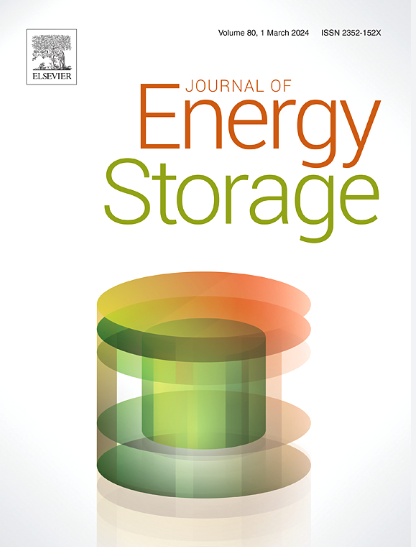Effect of Co content on microstructure evolution and hydrogen storage properties of La0.6Y0.15Ca0.9Mg1.05Ni9Cox alloys
IF 8.9
2区 工程技术
Q1 ENERGY & FUELS
引用次数: 0
Abstract
Superlattice hydrogen storage alloys exhibit advantages such as easy activation and high hydrogen storage capacity. However, compared with commercial AB5-type hydrogen storage alloys, the hydrogen desorption platform pressure and effective hydrogen storage capacity of superlattice hydrogen storage alloys are comparatively lower, which makes it difficult to meet the demand of gas-solid hydrogen storage devices. In this work, we have successfully prepared La0.6Y0.15Ca0.9Mg1.05Ni9Cox (x = 0, 0.25, 0.45, 0.65, 0.85) superlattice hydrogen storage alloys and systematically investigated the effects of Co content on the structures and properties of this series of alloys. The results of XRD refinement analysis show that the increase of Co content can cause the AB3-type phase to decrease gradually and the AB5-type phase to increase gradually in the alloy. Thermodynamic analyses of hydrogen absorption and desorption indicate that with the increase of Co content, the desorption platform pressure of alloy increases gradually, while the maximum hydrogen storage capacity decreases gradually. Notably, when x = 0.45, the alloy exhibits a maximum effective hydrogen storage capacity of 1.60 wt% under conditions of 298 K and 0.1 MPa, with a hydrogen desorption platform pressure of 0.4 MPa and a hydrogen storage capacity retention rate of 86.93 % after 200 cycles. The overall hydrogen storage performance of this alloy surpasses that of the majority of the superlattice hydrogen storage alloys reported in the literature. These findings provide guidance for the practical application of superlattice hydrogen storage alloys in gas-solid hydrogen storage devices.
Co含量对La0.6Y0.15Ca0.9Mg1.05Ni9Cox合金组织演变及储氢性能的影响
超晶格储氢合金具有活化容易、储氢容量大等优点。然而,与商用ab5型储氢合金相比,超晶格储氢合金的氢解吸平台压力和有效储氢容量相对较低,难以满足气固储氢器件的需求。本文成功制备了La0.6Y0.15Ca0.9Mg1.05Ni9Cox (x = 0,0.25, 0.45, 0.65, 0.85)超晶格储氢合金,并系统地研究了Co含量对该系列合金结构和性能的影响。XRD细化分析结果表明,Co含量的增加使合金中ab3型相逐渐减少,ab5型相逐渐增多。对吸氢和解吸氢的热力学分析表明,随着Co含量的增加,合金的解吸平台压力逐渐增大,而最大储氢容量逐渐减小。值得注意的是,当x = 0.45时,合金在298 K和0.1 MPa条件下的最大有效储氢容量为1.60 wt%,氢解吸平台压力为0.4 MPa,循环200次后储氢容量保持率为86.93%。该合金的整体储氢性能超过了文献中报道的大多数超晶格储氢合金。这些发现为超晶格储氢合金在气固储氢器件中的实际应用提供了指导。
本文章由计算机程序翻译,如有差异,请以英文原文为准。
求助全文
约1分钟内获得全文
求助全文
来源期刊

Journal of energy storage
Energy-Renewable Energy, Sustainability and the Environment
CiteScore
11.80
自引率
24.50%
发文量
2262
审稿时长
69 days
期刊介绍:
Journal of energy storage focusses on all aspects of energy storage, in particular systems integration, electric grid integration, modelling and analysis, novel energy storage technologies, sizing and management strategies, business models for operation of storage systems and energy storage developments worldwide.
 求助内容:
求助内容: 应助结果提醒方式:
应助结果提醒方式:


